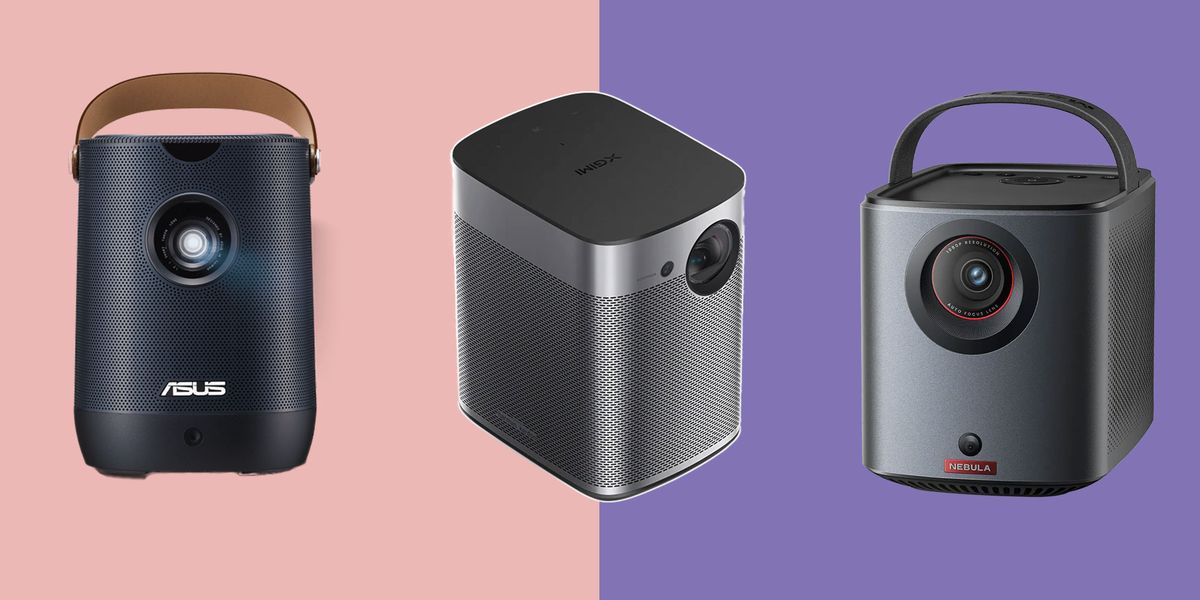How many lumens do you need for a portable projector?
The brighter the projector can shine, the better the display will look, and this is especially true if you’re watching during the day with the curtains open. A powerful home cinema projector should have at least 2,000 to 3,000 lumens.
This isn’t possible with portable projectors, but you still need as many lumens as possible. We found that projectors with 300500 lumens offered good brightness. The higher the figure though, the greater the cost.
What to look for when buying a portable projector
There are several things you’ll want to think about when shopping around for a portable projector, whether that’s the brightness, weight, battery life or its range of ports for connectivity. Below, we’ve run through some of the key factors we’d keep in mind:
Size and weight
Portable projectors need to be, well, portable, so it’s important to check dimensions. Chances are, the bigger the design, the larger the battery, and the brighter the screen, but if you plan on taking it with you, make sure you can easily move it about.
For example, the compact Nebula Capsule 3 weighs a mere 850g, while the BenQ GV31 is 1.6kg. Look for either lens covers or carry cases, to protect the projector.
Battery life
Portable projector bulbs require plenty of power, so battery life is short compared to a tablet or laptop, with two to four hours of maximum watching time, depending on the brightness level.
It’s great for a classic movie or a couple of episodes of something, but you may need backup power if you are indulging in the Marvel universe. Some mainspowered projectors can run using a portable battery pack, extending their range beyond the house.
Resolution
Portable projectors aren’t especially new. People have been using tiny Pico projectors for work presentations for years – but these designs had woeful resolution.
Today, though, we wouldn’t recommend a projector with less than 720p HD resolution, and many now have Full HD at 1920 x 1080 pixels. At Full HD, you’ll be impressed by the level of detail, even when projecting a huge 100inch display.
Brightness
The brighter the projector (in lumens and ANSI lumens), the brighter the room you can use it in, and the larger the image you can project. In a dark room, the difference between a 300 and 500lumen projector won’t be huge, but open the curtains and you’ll instantly see the difference.
While lumen is a standard scientific measurement for light, ANSI lumens is the standard measurement of projector brightness. This determines how bright the image will appear on the screen. This measurement is determined by the American National Standards Institute (ANSI), which specifies the brightness level of a projector based on a specific test pattern. You’ll find projectors listing ISO, LED and ANSI lumens, but the ANSI measure is the one we find best for comparative purposes and we’ve listed it with all the projectors in our roundup.
Sound
Please don’t expect searing surround sound from your portable speakers. Look for stereo speakers, however, and ideally at least 5W of power.
All the portable projectors on test also have Bluetooth, meaning they can be used as a portable wireless speaker. Some can also stream audio to external Bluetooth speakers for enhanced audio.
Connectivity
All the portable projectors on test connect to wifi and Bluetooth and have a series of ports including HDMI (for streaming video from a DVD player, settop box, laptop or phone).
Some also have an optical cable so you can connect your projector to a soundbar or audio system.
Streaming
Portable projectors typically use a version of Android or Android TV. Essentially, you’re giving the projector smartphone powers. This means you can download apps without relying on a thirdparty USB dongle.
Some models have Chromecast builtin, while others come with a streaming stick already plugged in, which is often a workaround for Netflix playback, something that isn’t universally approved to work natively on all devices.
Autofocus
Mercifully, the best portable projectors now offer autofocus and keystone correction this ensures the image is rectangular, even if you’re projecting from an angle.
Impressively, some designs can also tell if there’s an obstacle in their way and can shift the image to avoid a light socket on the wall, for example.
Some will also have “eyesight protection” built in so that whenever anyone walks in front of the projector light, it’ll dim the action until all’s clear.


